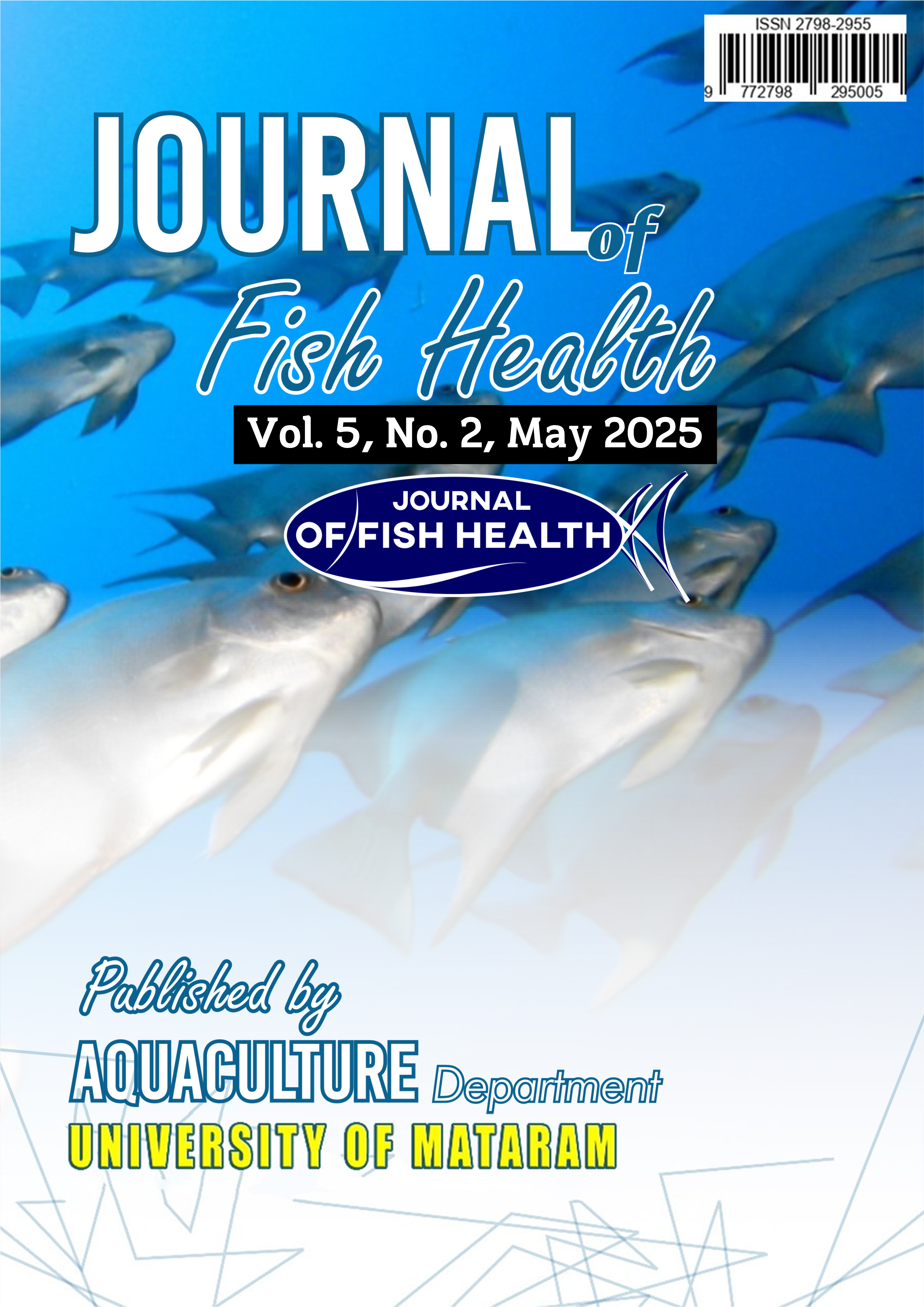Hatchery Performance of Barramundi (Lates calcarifer) in the Integrated Pond Systems
DOI:
https://doi.org/10.29303/jfh.v5i2.6291Keywords:
Breeding, Lates calcarifer, Productivity, Water QualityAbstract
The barramundi, also known as Asian sea bass, has the ability to adapt to various environmental conditions. Indonesia has introduced barramundi from different regions, including Australia, which is known to have a faster growth rate and larger body size. At the same time, the Indonesian strain demonstrates greater resilience to local conditions but grows more slowly. This study evaluates the hatchery performance of Australian and Indonesian strains of barramundi (Lates calcarifer) in a controlled environment using circular concrete ponds. The research examines water quality, spawning productivity, and larval development. The results indicate that the Australian strain produces more eggs than the Indonesian strain, with a hatching rate of 62%. Key water quality parameters, including temperature (28.3–28.6°C), pH (8.26–8.29), and salinity (33–35 ppt), were generally favorable for successful spawning and larval development. Additionally, providing live feed, such as rotifers and Artemia, improved larval growth up to the early juvenile stage. The significant differences in productivity between the two strains highlight the importance of genetic selection and nutritional management in optimizing barramundi hatchery production. This study underscores the need for superior strain selection and the application of science-based aquaculture strategies to enhance the sustainability of barramundi production in Indonesia.
Downloads
Published
Issue
Section
License
1. The copyright of this journal belongs to the Editorial Board, based on the author's consent, while the moral rights of the publication belong to the author(s).
2. The formal legal aspect of journal accessibility refers to the same Creative Common Attribution + Noncommercial + ShareAlike (CC BY-NC-SA), implying that publication can be used for non-commercial purposes in its original form.
3. Every publication (printed/electronic) is open access for educational, research and library purposes. In addition to the objectives stated above, the editorial board is not responsible for copyright infringement















